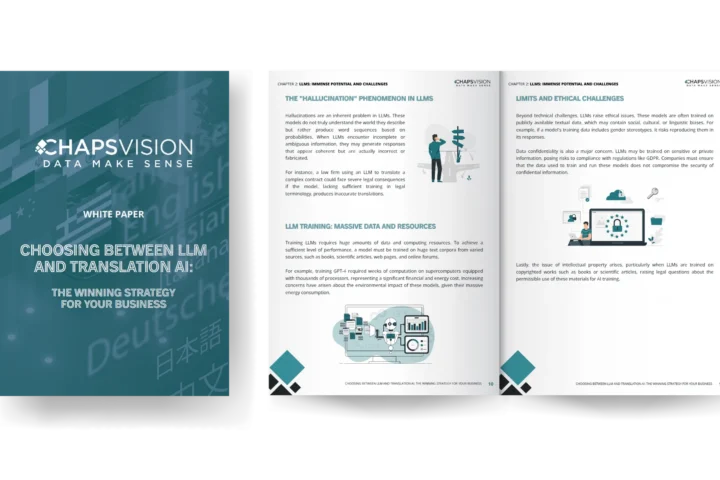Global businesses have to create content that resonates deeply with their audiences. One language and style simply won’t suffice in today’s interconnected world. Content must be translated into multiple languages to reach a broader user base effectively. However, translation alone is not the end of the road. Each target market has its unique culture, which demands further content adaptation. You have to adjust spellings, terminology, slang, data formats, and symbols, even within the same language! Managing intricate translation and localization processes for large content projects is daunting and time-consuming.
Enter the translation management system – a game-changer for businesses in the globalized landscape. This article explores the benefits of using translation management software and ideas for its effective use. We also look at different solutions and how to choose the best one!
What is a translation management system?
A Translation Management System (TMS) is a software platform that streamlines the process of translating content from one language to another. Its primary purpose is simplifying and automating various translation-related tasks and making the translation process more efficient. Key features of a Translation Management System typically include:
Content organization
A TMS allows users to store and manage their source content in a centralized repository. You can organize everything from text strings, documents, website content, software interfaces, and multimedia files. The TMS stores previously translated segments of text, called translation units, in a translation memory component. For example, if you add new content similar to previously translated material, the TMS can suggest reusing existing translations.
Workflow management
A TMS facilitates collaboration between translators, proofreaders, and project managers. You can assign tasks, set deadlines, and track progress for all your translation projects. You can also integrate with other software and content management systems for seamless data transfer and improved productivity. For example, integration with machine translation engines provides instant translations.
Quality assurance tools
A TMS includes features to check the quality and accuracy of translations. For example, you store standard terminology, and the TMS automatically flags potential errors or inconsistencies in specialized terms for your entire project. TMS platforms also provide reporting features that offer insights into translation project metrics like costs, timelines, and translator productivity.
Why do organizations use translation management systems?
A translation management system significantly improves the efficiency and effectiveness of translation processes for organizations. TMS adoption brings four main benefits
Faster time to market
A TMS significantly accelerates the translation process through automation and optimization. Efficiency improves across the board due to centralized content management features like:
- Real-time communication
- Feedback exchange
- Version control
- Translation memory
Automated workflows and integration with machine translation lead to faster turnaround times. Businesses can launch products and campaigns more quickly in new markets.
Improved global brand reputation
A TMS has many features to ensure linguistic and cultural alignment across different target markets. It has several features for automatic quality checks, suggestions, and terminology rules to achieve consistent style and messaging across all content. Additionally, TMS platforms prioritize data security through encryption and access controls to protect sensitive content. The emphasis on security and consistency improves your organization’s reputation as a local and trusted brand in your target market.
Revenue and profit growth
Faster launches and quality content brings increased sales and more revenue streams. But beyond that, TMS also provides significant cost savings for your translation projects. Automation features reduce expenditure on human translation efforts. Real-time tracking and reporting features provide your project managers with comprehensive insights into the progress of each translation task. They can review analytics to tweak the translation workflow for improved efficiency. Saving time and money automatically increases profits and drives business growth!
How to create an effective TMS translation workflow?
You may be eager to adopt a TMS solution, but it is essential to do it right. The steps to creating an effective TMS translation workflow are given below..
Step 1: Preparation of translation assets
First, you need to gather all the content that needs to be translated. It could be anything from your marketing materials, user manuals, websites, or mobile app content. Upload everything to the translation management system.
For example, imagine you’re a software company expanding your app into international markets. You’ll gather all the app’s interface strings, error messages, and help documentation that requires translation.
Step 2: Environment configuration
You must configure the system to support the languages you want to translate the content into. Let’s say you’re targeting Spanish, French, and German-speaking markets. You’ll ensure the TMS is all set to handle these languages and any other specific requirements for each target market. Additionally, establish translation memory and a glossary to maintain consistent terminology across all translations.
Step 3: Content Translation
You assign translation tasks to your expert linguists who are fluent in the target languages and understand your industry well. To make their job more efficient, the TMS provides them with suggestions from translation memory. For instance, if your app’s error message in English has been translated before, the TMS will suggest reusing that translation for the same error message in other languages. This saves time and ensures uniformity across translations.
Step 4: Reviews and approvals
Once your translators are done, you use the TMS to assign skilled reviewers or proofreaders to examine the translated content carefully. They’ll ensure the translations accurately convey the intended meaning and adhere to your brand guidelines. For example, if you’re translating marketing materials, you want to ensure the messaging resonates well with the target audience in each language, capturing your brand’s voice.
Step 5: Re-import translated content
After approval, it’s time to bring back translations into the source files. The TMS helps you export the translated content in the desired format, whether a Word document, XML file, or any other file type you need. Now, your app is all set to be launched in the new markets with multilingual support.
Communication and collaboration among your translation team, reviewers, and project managers are crucial at every step. An effective TMS workflow ensures a smooth and efficient process for everyone!
What are the types of TMS solutions that you can choose from?
Translation Management Systems (TMS) can be categorized into different types based on their features, deployment options, and target users. Here are some common types of translation management systems.
For enterprise users
Enterprise TMS solutions are designed to meet the needs of large organizations with extensive translation requirements. They offer advanced project management, collaboration, and scalability features to handle a high volume of content and multiple languages. Their deployment may be:
- Cloud-based, so the system operates on remote servers, and users access the platform via the internet.
- On-premises so you can install and maintain it on the organization’s local servers or data centers.
Software vendors develop and sell commercial TMS solutions with various features and support options. You typically pay for user licenses as monthly or annual subscriptions.
For individuals and small businesses
Some TMS platforms cater specifically to individual freelance translators or small translation agencies. These systems have simplified interfaces and may need more features like machine translation and localization management. However, they are cost-effective for small-scale translation projects.
Choosing the right TMS solution
Translation management software can help your organization expand its reach and grow faster. However, you have to choose the one that gives you maximum features out of the box. Key features to look out for include:
- Automation features like alerts, checks, and other repeat tasks
- Customization flexibility so you can adapt to your requirements
- User-friendly and able to provide a rich context experience
- Integration with advanced machine learning and AI capabilities
Most importantly, major TMS all integrate with Systran neural translation technology, giving you powerful machine-learning capabilities !






